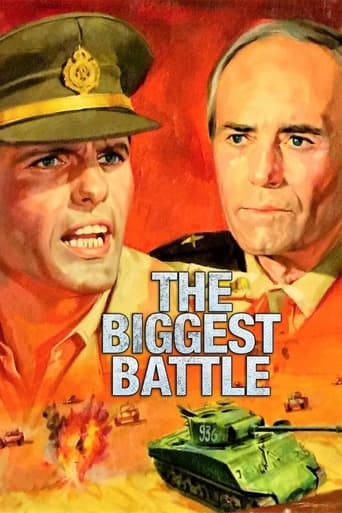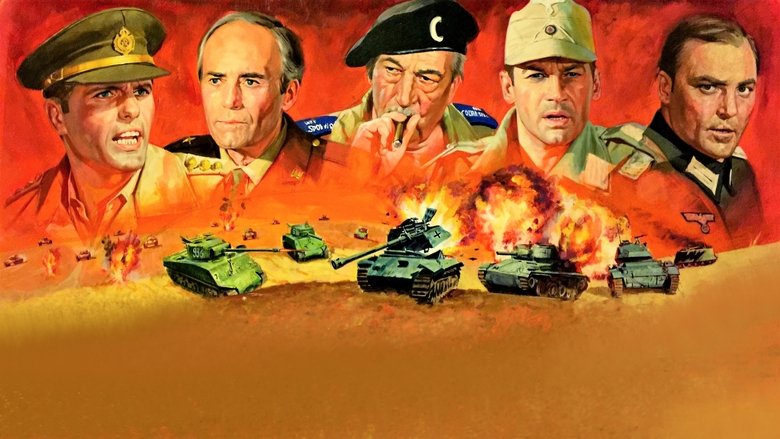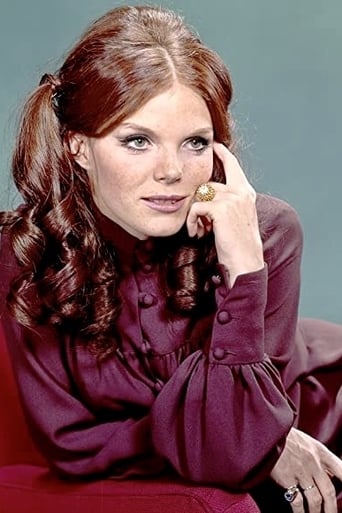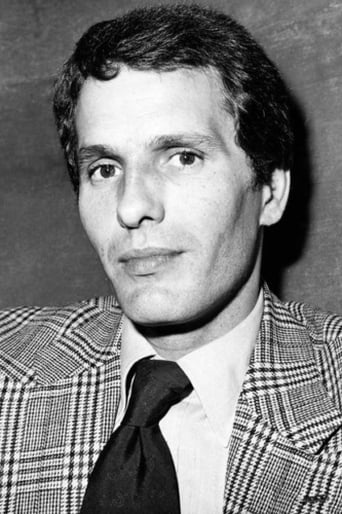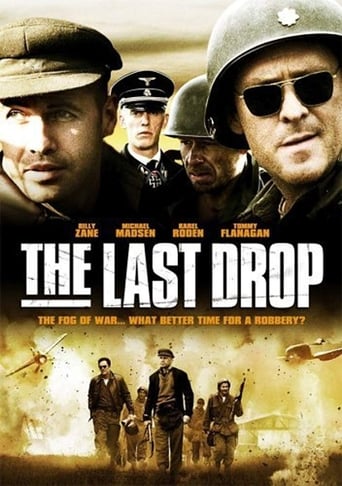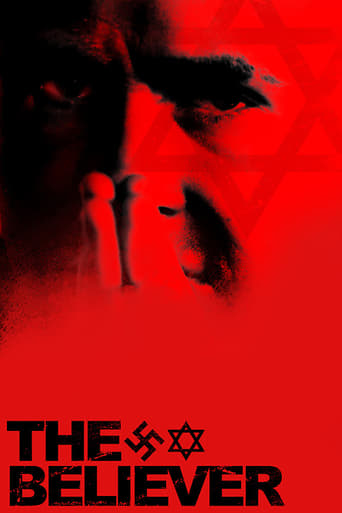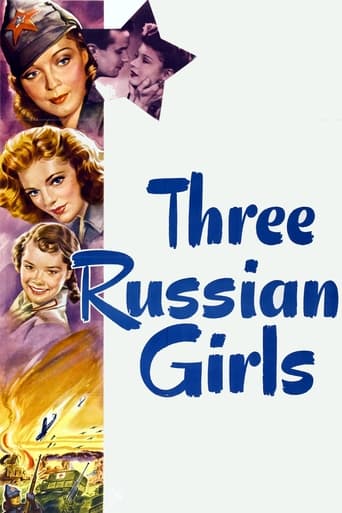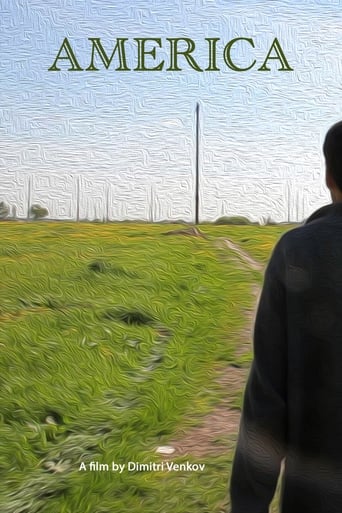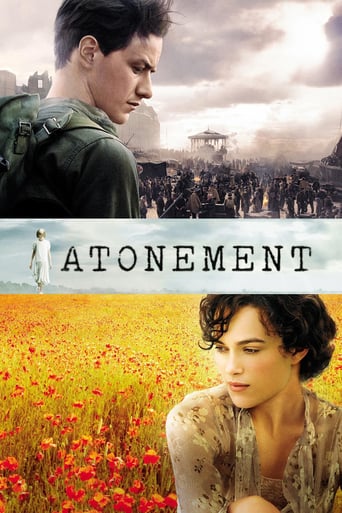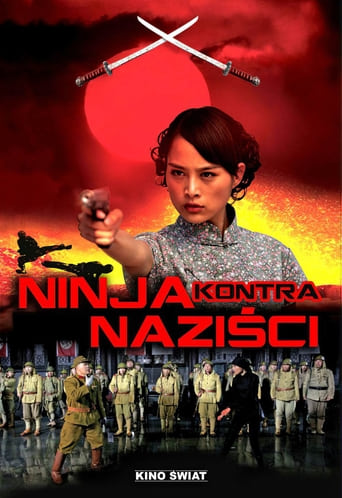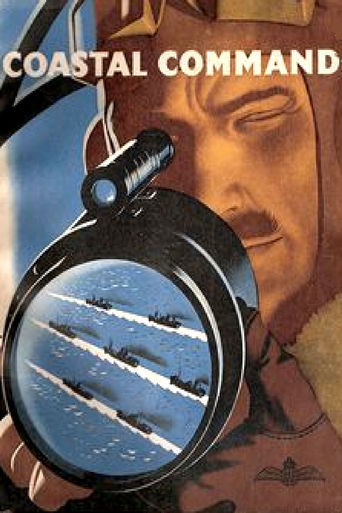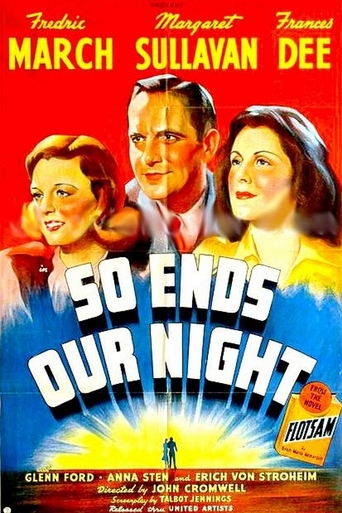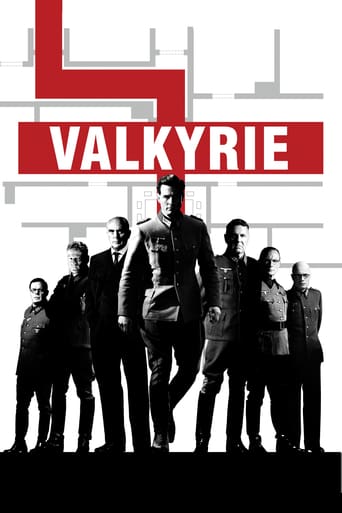The Biggest Battle (1978)
A story of how World War II affected the lives of a German family and an American family, both of whom had sons and fathers fighting in the war.
Watch Trailer
Cast


Similar titles
Reviews
Truly the worst movie I've ever seen in a theater
Awesome Movie
The performances transcend the film's tropes, grounding it in characters that feel more complete than this subgenre often produces.
It's easily one of the freshest, sharpest and most enjoyable films of this year.
The Biggest Battle (1978) * 1/2 (out of 4)Incredibly disappointing drama starts off in Germany during the 1936 Olympics where an American general (Henry Fonda), a German major (Stacy Keach), a Jewish actress (Samantha Eggar) and a war correspondent (John Huston) are having dinner and agreeing that Hitler will not cause a war. Flash forward to 1942 and war is happening and all sides of this dinner are now in the middle.THE BIGGEST BATTLE is an Italian and West German co-production that was meant to rival various American movies that took on the WWII subject. Of course something like MIDWAY was an obvious inspiration. The most interesting thing about this film is that it did have a bigger budget than you'd normally see in a film like this but the problem is that the budget wasn't big enough. It's clear that writer-director Umberto Lenzi wanted to make an epic war film and even got a terrific cast together but the film falls well short of that.There's no question that the biggest problem with this film is its screenplay. I never found any of these characters to be interesting and especially the Keach character. I found the character to be extremely bland but so was another subplot that deals with Fonda and his two sons going off to fight in the war. The "proud father" aspect just doesn't work. There's really nothing story wise that connects with the viewer and this incldues the action. There are a lot of action scenes but they just feel cheap and never contain any tension.With all of that being said, the most amazing thing about this picture is the fact that they got such a great cast. You've got Fonda, Keach, Huston and Eggar but there's also Helmut Berger, Edwige Fenech, Ray Lovelock and various other foreign actors. You've also got Orson Welles doing the narration in some versions but the version I watched didn't feature that. The story was confusing as it was so perhaps his narration was used to make more sense out of the film?THE BIGGEST BATTLE is a pretty poor film but the worst thing is the fact that it's really disappointing considering the cast.
Director Umberto Lenzi's movies have always been the subject of criticism on web boards and even from nationally known reviewers, including Leonard Maltin. It seems as though he takes a lot of flak simply because his films are made overseas. At its heart, "The Greatest Battle" is really no better or worse than the slew of epic war films to come out of Hollywood in the 1970s. During the Berlin Olympics of 1936, German Major Roland (Stacy Keach); American General Foster (Henry Fonda); reporter Sean O'Hara (John Huston) and Jewish actress Annelise Ackerman (Samantha Eggar) meet and become friends. Flash forward to late 1941: America is embroiled in World War II. Several more characters are introduced, namely: Foster's loser son, John (Ray Lovelock); gutsy British commando leader Captain Scott (Giuliano Gemma) and dedicated Nazi commando officer Lt. Zimmer (Helmut Berger). All of these characters become interconnected over the course of the next two years and wind up coming face-to-face at the Battle of the Mareth Line in North Africa. Each turn in a dedicated, honest performance something to be admired in this genre. Several familiar European actors appear in the supporting cast, and although their parts are unimportant to the storyline, it's essential to mention some of them: Giacomo Rossi-Stuart ("Hornets' Nest") plays John Foster's commander; Andrea Bosic ("Hell's Brigade") as the leader of Greek partisans; Ida Galli ("Eagles Over London") as Scott's estranged wife, and Venantino Venantini ("The War Devils") as her new husband; Geoffrey Copleston ("The Assisi Underground") as a menacing SS Colonel; Luciano Catenacci ("The Battle of El Alamein") as a British radio operator; the list goes on forever. Even Orson Welles ("The Battle of Neretva") narrates the proceedings rather unnecessarily and, often, incorrectly. For the most part, this is a plot less series of scenes, chronicling major events in the characters' lives and campaigns. Lenzi fills out the running time with stylistic action sequences and well-integrated stock footage. Lenzi's directorial style and energy are apparent in a number of battle scenes. He takes a lot of ideas and scenarios from his earlier war films notably, "Battle of the Commandos" (a partisan ambush of a German armored convoy looks awfully familiar, as does a commando raid on a coastal bunker) and shoots them with a bigger budget and more professionalism. The Federico Zanni photography is simply dazzling and excellently edited by Eugenio Alabiso, one of my favorite genre-editors. Unfortunately, a lot of familiar stock footage from "Battle of the Commandos", "Commandos", "Desert Assault" and "The Battle of El Alamein" is used as a substitute for original action footage, which really hampers the original, epic feel of the movie. But look at Hollywood's epic "Midway" released in 1976: it's a hodgepodge of stock footage and cameos, yet is much better received by audiences than this film. The major action sequences revolve solely around the stock footage, but that's okay in this movie, because the material surrounding these sequences is so good.The production values are amazingly high in this film, setting it another notch among its' peers. The sets, from Parisian bars and brothels, to huge entrenchments, fuel dumps and railroad stations look fantastic. The costumes and props are appropriate, too. There are hundreds of extras, tanks, APCs, jeeps and airplanes dotting the screen, giving the film the appropriate epic look. This Italian-produced war epic is typically underrated and undeserving of the criticism it so often receives. While it does lack a storyline and has no character development whatsoever and contains reels of stock footage, the original material, style and slew of actors help to offset these flaws. "The Greatest Battle" is no better or worse than any similar film made in Hollywood, and is certainly much more entertaining and engaging than titles like "Midway".
I don't understand how Luciano Martino and Mino Loy were able to raise the money to hire so many big-name actors of the time (such as Orson Welles, John Huston, Henry Fonda, and Samantha Eggar) but they still had to rely on plentiful stock footage from earlier war movies like THE BATTLE OF EL ALAMEIN and LEGION OF THE DAMNED. Umberto Lenzi's directing is good as usual, with lots of emphasis placed on the well-edited action scenes. The budget for such scenes seems quite minimal however, with a lot of the same actors dying over and over again, and a few really shoddy toy tanks exploding (though a few shots of these tanks were lifted from other movies).As for the cast, just about everybody that had anything to do with the Italian movie industry shows up somewhere in the movie, from familiar dubbing voice Robert Spafford as Patton to future director Michele Soavi as Fonda's dead son. The photography and music are all top notch, yet this movie has gotten ad reviews accross the board. Why? Because it has little or no plot to speak of. There are so many characters and so much going on in the film that it has no focus or direction. Eggar's character has no point in the movie other than she makes it slightly longer, and Edwige Fenech gets one lousy scene as a French prostitute. Eventually, most of the actors end up in Africa fighting on one side or the other and (surprise!) the Germans lose and all the German characters die, the end. But who goes to watch a good old-fashioned war movie for the plot anyway? There's plenty to enjoy if you like watching German soldiers lying in the road pretending to be dead so they can shoot the American soldiers that run up to help them. It also contains a number of memorable scenes like when Stacy Keach gets lost in the desert and falls over after about 1 minute of walking, and a very goofy case of bad communication when Ray Lovelock attempts to call up his father and the two barely manage to get through even a few words...The ending really comes out of nowhere though, but it's made especially funny as John Huston seems to just get bored of the movie and walk off saying "seeya around" right into the camera! Definitely not a movie to miss...for fans of the genre.
For a low-budget movie set during World War II, it does have a rough and violent edge. Above all, BATTLE FORCE surrenders to a non-existent plot and storyline that's been duped hundreds of times repeatedly. Don't expect much here as there's no specific meaning. Explosions and body counts are nothing new! Adding to the troop casulty count is of Orson Welles' annoying and interrupting narration, making it feel like a made-for-television documentary. War movies are instant classics in the grade "A" Hollywood circuit, and SAVING PRIVATE RYAN triumphs realism today. Despite a fairly good replica of those WW2 days, BATTLE FORCE is another run-of-the-mill production without enough substance. Anyone who grew up watching Hollywood war dramas in their lifetimes probably avoided this one while history was made.

